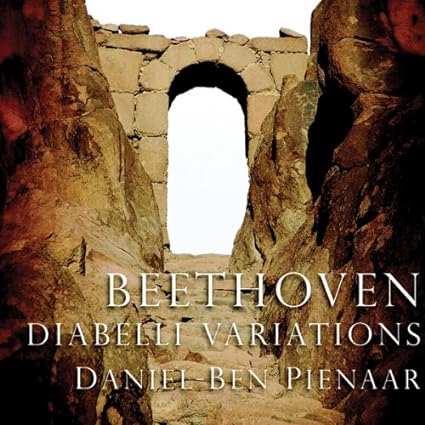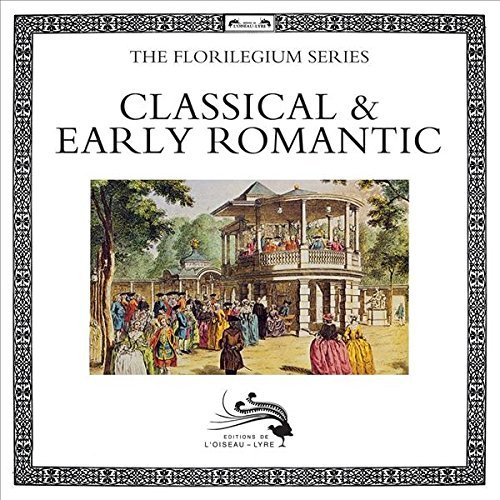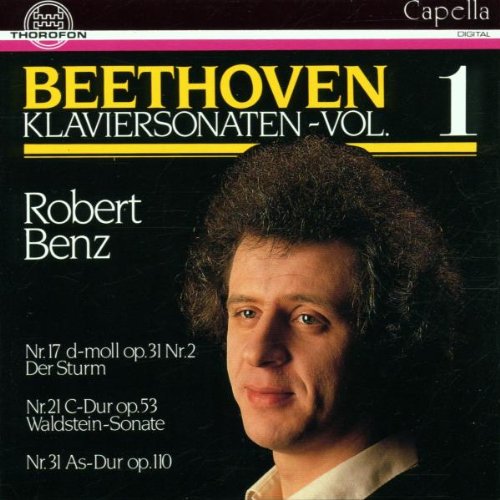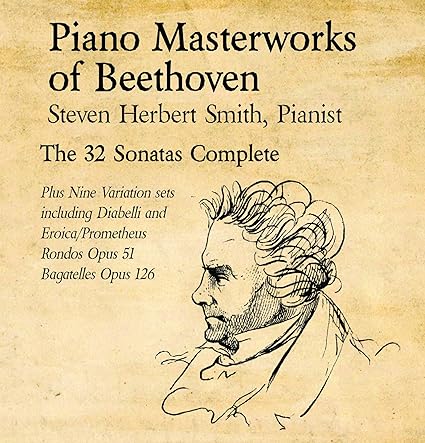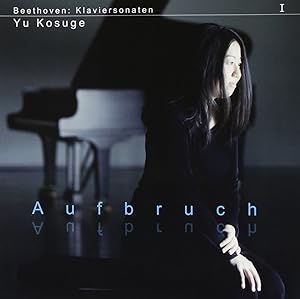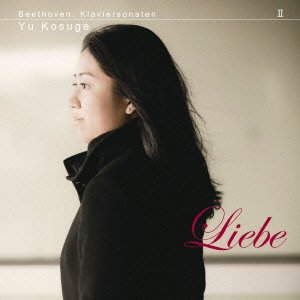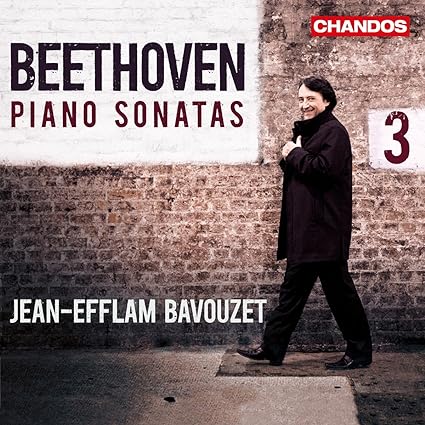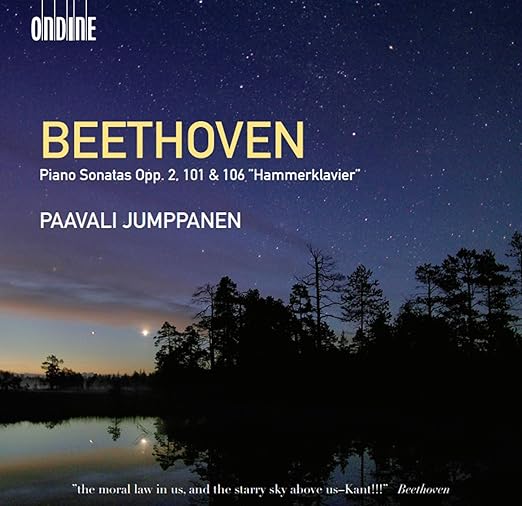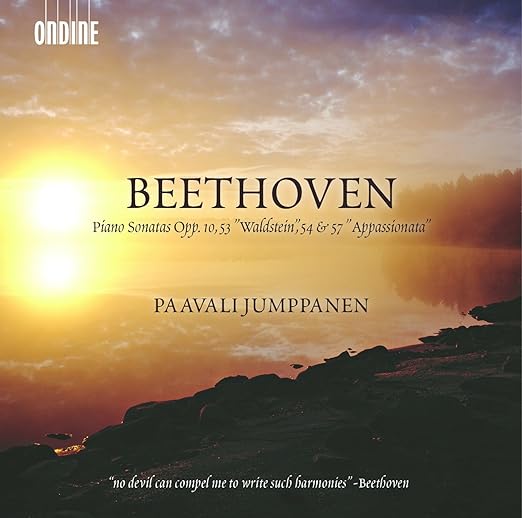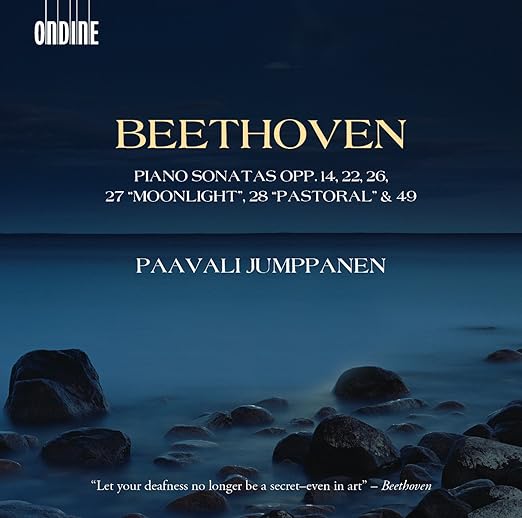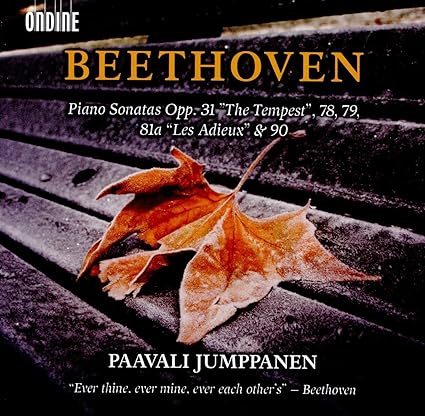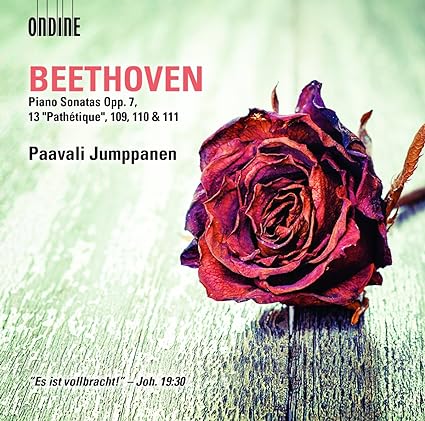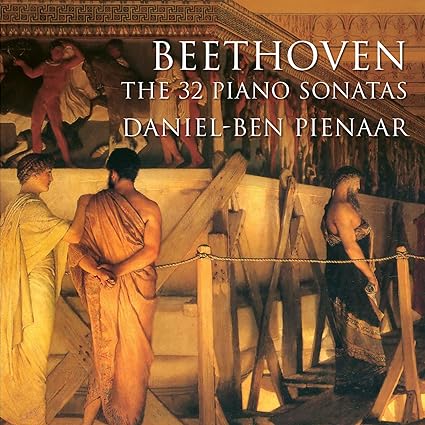
I don't care for Daniel-Ben Pienaar's Mozart. Relentlessly fast and jittery, and not recorded particularly well, I find the set a bit tiresome. The music largely wilts under Pienaar's fingers. Until now, the Mozart was my only exposure to his playing. When I read that he had recorded the 32, I was excited because it was another new cycle, but a bit wary because of the Mozart. Of course, Beethoven is not Mozart, and it's hard to say "No" to a new LvB sonata cycle, so I went for it. Perusing the presentation and timings, the twenty five minute Op 31/2 and twenty nine minute Op 111 aside, nothing seemed particularly noteworthy, and nothing seemed outside the realm of what has been done before. The cycle is presented chronologically, which is a reliable way to do it. And the pianist offers his own newly minted notes. In his notes, Pienaar references Gilels and Kempff and St Annie and Schnabel and Feinberg and Horowitz, and writes about how considering pedagogical history and the instruments of Beethoven's day compared to instruments today can create "another call on the personality and skills of the performer himself to
make something that has integrity on its own terms indeed a life of its own." (Italics are original.) This reveals Pienaar's approach and ambition. An ambitious pianist with superb technique can indeed produce art of the highest order. Does Pienaar succeed?
Well . . .
Disc one includes the Op 2 sonatas. Pienaar plays the opening Allegro of 2/1 at a suitable speed, generating a nice degree of intensity. He also deploys rubato that sounds somewhat arbitrary. The slightly quick Adagio offers more of the same in every regard. Pienaar keeps the Menuetto fluid and appealing, and plays the Prestissimo with a nice blend of shard-edged intensity, flawless execution, and personal touches. His dynamic control is most impressive. But the parts exceed the sum. I like it, just not as much as I should. 2/2 offers more of the same but better. Within a conventional overall timing for the Allegro vivace (sans the repeat), Pienaar offers rhythmic and dynamic flexibility aplenty, and the right hand runs are most appealing. The Largo is a true Largo. Slow, yet displaying the same flexibility, Pienaar dives deeper here than in 2/1's slow movement. This is serious, thoughtful playing. The gentle insistence of the right hand playing is uncommonly effective. After a long pause, the Scherzo skips into life. The overall tempo is relaxed and the overall feel is an unusual admixture of seriousness and fun, with a dash of greater seriousness in the trio. The Rondo is a model of effortless dynamic fluidity mixed with unique rubato and phrasing. 2/3 opens with a swift and vigorous Allegro con brio. Pienaar never seems content to just play the music, rather choosing to infuse every bar with something unique. His control when accelerating or cranking up the volume is masterly, and perhaps even more impressive, his diminuendos at times display shading so quick yet subtle as to require the listener to halt other activities so as not to miss even a note, or the space between the notes. The Adagio is dramatic and searching, and Pienaar elicits a unique, distant sound when striking the tolling bass notes. The Scherzo is generally quick and jittery, with the right hand playing prone to outbursts, and the trio boasts crazy good right hand playing. Like the playing or not, this is a match for anyone's. The Allegro assai is a playful, unabashedly virtuosic romp dispatched as well as one could hope. The first disc ends up being difficult to assess in some ways. The playing is splendid, the control absolute, and it is full of ideas, many of which most of which succeed, but it doesn't necessarily jump to the head of the pack. It needs further consideration. Though decidedly different, the best overall comparison for me is to Anton Kuerti's strongly individual cycle. I prefer Pienaar in these works (and cannot wait for the later works), but Pienaar appears to have put in a similar degree of thought into the pieces.
Op 7 opens with an Allegro molto e con brio of not a little rhythmic vitality and masterly dynamic control, with bright, unrestrained chords. Pienaar also manages to keep forward momentum chuggin' along while tinkering with tempo and throwing in a micro-pause or two. Pienaar shows that he knows how to do Largos. Slow and nuanced and lovely, he never rushes yet always maintains a discernible forward pulse. He then plays the Allegro in an exaggeratedly slow yet beautiful fashion. How can such playing not sound lumbering and impossibly heavy? I don't know, but it doesn't. Even the middle section is played slower than normal, and it, too, succeeds. The bass never growls or imposes itself it's more a gentle musical boil. The Rondo, except for a speedy and stormy middle section with nifty left hand figurations, is all about restraint and lyricism. 10/1 opens with lightning fast ascending arpeggios that still sound somewhat light and utterly effortless. The playing remains high-energy all the way through, and Pienaar plays some of the music around 3'15" with unique accents. The slow Adagio displays more of the forensic flexibility displayed in prior slow movements, and once again rates high on the (mutable) taste scale. The are so many felicitous little touches sprinkled throughout that listing them would result in at least a thousand word paragraph. The Prestissimo is is indeed a Prestissimo. Pienaar plays most of the music at almost player piano velocity and precision, but he also slows down to savor a few passages. 10/2 closes the disc, and Pienaar plays with wit and a sense of fun, and more tasteful flexibility, including a cartoonishly fast but perfectly executed Presto. (Listening to this made me want to jump immediately to 31/1, but I stopped myself.) Yes, the playing is very individual, even idiosyncratic, but it all jells, it all flows "naturally". My only beef is that Pienaar, like Younwha Lee so recently, omits the third movement repeat. Why, why, why, why?!? I guess I will have to live with it.
The third disc opens with 10/3, and Pienaar offers more of the same. The Presto, taken at a fine tempo and displaying some passages of speediness and showy digital dexterity, also boasts an uncommon degree of flexibility. Pienaar slows down around six and half minutes and plays each note in deliberate, underscored fashion for a few seconds, before dispatching the coda with flair. Pienaar again delivers an extremely fine Largo. Slow, with a wide dynamic range, and perfectly maintained musical line and forward momentum, there is a sense of drama and urgency, which Pienaar builds to a satisfying climax. The Menuetto starts off slower than normal, and more or less stays that way, with even the middle section played slower than normal and with heavily accented, lumbering notes that nonetheless work well. The Rondo sounds a bit languorous at times, with the playing drooping in energy for a while before picking up the pace nearer the end, almost like a musical jest. The Pathetique follows, and the Grave sounds suitably serious and dramatic, with some front-loaded phrases adding a nice touch. The Allegro displays that fast, jittery sound I found unpleasant in Mozart. It's much more successful here. The agitated, scampering sound of the playing may put some off, and some of the right hand runs display the almost cartoonishly fast playing first heard in 10/2. The Adagio sounds lyrical and for the most part lovely, though the right hand playing dominates proceedings most of the time, and Pienaar's penchant for jittery playing appears in the accompaniment. Here, I think it works. Others may very well disagree. The Rondo pushes the individual playing right into willful/idiosyncratic territory. Some of the playing does draw more attention to the pianist than the music, but at least Pienaar has the goods to back it up. 14/1 follows. It opens with a slightly broad Allegro, benefits from some pedal augmented scale, and generally sounds like great fun. Anytime Pienaar needs to play fast, he seems to relish the opportunity. The Allegretto is on the slow side. Some notes and chords get to fade away, other blend into the subsequent playing, and if the playing is again more about the pianist than the music, the effect is striking. The Rondo, like the opening movement, sounds a bit bigger in scale than normal. While not heavy or overly serious, it seems to push the boundaries of what the music can take. 14/2 is a bit lighter in the opening Allegro, and again, not a bar goes by where Pienaar doesn't tinker with something, though always to good effect. Pienaar's tendency to emphasize the melody is inverted for a while in the Andante, with the accompaniment coming to the fore, but with playing this good, it all works. The Scherzo is zippy and Pienaar plays with tasteful virtuosity, dashing off some passages with insouciant ease.
Disc four opens with Op 22, and right in the opening bars, Pienaar can't help but tinker, and as the Allegro con brio unfolds, he dazzles with his stupefyingly good dynamic control and elastic tempo changes within a movement of well judged overall tempo and plenty of energy. The songful, slow, contemplative Adagio moves along at something more akin to a Largo, so slow does Pienaar play it. But it works. And that piano and pianissimo playing is something else. The Menuetto remains largely subdued, with much nuanced quiet playing, except for the boisterous middle section, and the Rondo is played with large slugs of exuberant energy and gobs of dynamic shading. Pienaar starts off Op 26 with a slower than normal Andante, of not a little beauty, and he plays most of the variations slower than normal. Sometimes clear, sometimes lyrical, each variation is its own little world. The Scherzo, in contrast, is zipped through, and contains jarring dynamic swings, and superb precision. The Funeral March starts off slow and somewhat subdued, and decidedly serious. Pienaar largely avoids playing the piece very loud, though in the middle section, in the midst of of restrained bass tremolos, he does pound out some playing. Pienaar never really lets the concluding Allegro just flow, instead using accents and dynamic shifts throughout, creating a slightly stilted sound. It's an impressive display of pianistic jiggery-pokery, but I'm not sure if it is entirely successful. The disc ends with 27/1, and Pienaar continues on with heavy-duty interventionism. The opening chords are lightly pecked out, with the rest of the Andante approaching something more conventional. The Allegro is insanely fast, and the return of the opening theme is much like what came before. The contrast between the sections is evident and obvious. Too much so? Maybe. The Allegro molto e vivace, played swiftly but slower than the Allegro section in the first movement, has some unusual not to say bizarre left hand playing that overpowers the delicate right hand playing, and has a purposely stiff and sightly aggressive mien. This gives way to a lovely Adagio, with prominence of hands reversed, including at times nearly inaudible accompaniment. The Allegro vivace has more speedy, speedy, speedy playing, some uniquely (oddly?) emphasized right hand chords, builds to a towering climax, and then the return of the opening material is played basically straight and quite beautifully. The whole thing ends with a dashed off Presto. It's only about fifteen minutes, but it's packed full of more ideas and interpretive tricks than most sonatas twice as long.
The
Mondschein opens disc five. Pienaar maintains a remarkably steady tempo throughout, and without creating much musical haze manages to impart a sense of solemnity. He generally keeps things subdued, though he builds up to either a really loud mezzo-forte or a plain old forte in any event, it's louder than one usually hears. He also plays some of the arpeggios in a manner I can't recall having heard before. The Allegretto is perfectly paced and maintains a somewhat somber air. The Presto agitato is of the fast and furious type, with some crashing chords, and the blurred right hand playing is occasionally harsh and bright, but in good ways. This is a definitely a unique reading, and it is definitely an exceptionally fine one. This is one to compare directly to the big guns. Op 28 opens with a twitchy bass line underpinning the lyrical right hand playing in the Allegro. While Pienaar does play slower passages well, it is the faster passages that really shine. The mix of recording technique and playing result in some less than ideally clear right hand playing, but the effect is exciting. The climax of the development section is intense and loud and underpinned by an insistent left hand. The movement never really sounds relaxed at all; it is always slightly on edge. The Andante continues on in the same vein in the outer sections. The middle section really just offers more of the same. While the playing can sound attractive at times, the whole thing is wound tight. That's not to say it doesn't work. It most certainly does. The Scherzo stomps and crashes through the outer sections, and is all controlled recklessness in the middle section. The final movement relaxes the tension just a bit, and has some ravishing playing. Pienaar plays the first big climax with wonderful cascading right hand notes, and ends with a corker of a coda. Another unique and great, or at least near-great, recording. 31/1 ends the disc, and boy did I want to hear this. I was not disappointed. Pienaar plays fast and aggressive, but it's playfully aggressive. The stuttering chords are hammered out, with perfectly uncoordinated playing. It's like Pienaar gleefully assumes the role of hyper-virtuoso, laughing a sinister laugh as he plays. The trills in the Adagio are among the best, perhaps the best, I've heard. Fast and incredibly even, and played over a rock steady left hand, they dazzle. But things get better. The right hand playing soars and flows and just sounds right. The middle section is joyful and just a bit klutzy in parts. And did I mention his trills? The Rondo is a perfect blend of energy, weight, rhythmic snappiness, and witty verve. And just how does he play with such perfect independence of hands and make the piano
laugh between about 3'30 and 4'30? This recording is right up there with Gulda and Sherman and Kuerti qualitatively. That is, it is as good as it gets. A
great disc.
Disc six opens with 31/2. Pienaar stretches out the arpeggios in the opening Largo just about as far they can go, and plays with remarkable dynamic control on the quiet end of the spectrum. Then, as expected, the Allegro is fast, articulate, dynamically wide ranging, and at times a bit jittery but here jittery works. So does the near-clangorous forte playing. I can't say that Pienaar establishes much of a mood. He just displays supremely fine piano playing. The slower than normal Adagio offers more stretched out slow passages and an artificial stateliness. It's an act, as it were. But what an act! The Allegretto flows fluidly, and has some nice, beefy left hand playing at all the right times. Some rubato draws perhaps just a bit too much attention to itself. Or maybe it doesn't. The sonata is not quite as relatively great as 31/1, but make no mistake this is a contender, still able to be compared directly to super-heavyweights. Call it a top ten performance. 31/3 starts off with slightly blurred chords, moves to purposefully rhythmically unsteady playing, spiced up with superb trills, and then moves into some fun and energetic playing. The Allegro never seems to establish a steady pulse, instead seeming to be a simultaneously winking and snarky joke. Those disliking interventionist playing may very well strongly dislike this. The Scherzo zips along with a steadier rhythmic pulse, and Pienaar keeps the volume at sensible levels all the better to jar with the thumping loud chords when they appear. It's a rollicking good time. The slightly tense but attractive Menuetto sounds fairly conventional, but has some tasty individual elements tossed in. The Presto con fuoco is of the super-high speed, over-the-top variety, all fun and games, and it offers Pienaar yet another chance to show off what he can do. Those wanting self-effacing playing will probably not fancy this. But the infectious energy level threatens CDC involvement, so color me a fan. Another easy top-ten choice. Possibly a top-five choice. Pienaar delivers a blockbuster Op 31, which is a prerequisite for a great cycle. The rest of the disc is consumed by the Op 49 ditties. Pienaar tinkers with tempo quite a bit, and a few times threatens to make the pieces just a bit more serious than they are, but he never quite does, and both pieces sound just spiffy.
The next disc is an Op 50-something feast. The
Waldstein opens fast, and then gets faster it's that cartoonishly fast style again. Pienaar has the chops to pull it off. No compressed dynamics here, for instance. It can seem a bit relentless at times, though never harsh or ugly. And when the music slows down, there is more to enjoy in terms of dynamics and individual touches. That said, the movement always has a tense, jittery feel. Subtle is not a word I would use to describe it. The Introduzione is far more restrained, and chock-full of pauses. Mannered? Perhaps. Wait, make that definitely. But it's also effective. Pienaar also coaxes a more appealing tone from his instrument. The Rondo opens with a lovely Allegretto moderato with a most expertly judged tempo no need to rush. The superb trills usher in a fast, furious, clangy, biting Prestissimo. Pienaar again deploys personal rubato and wide dynamic swings to good effect. The interpretation strikes me as a bit superficial, but the execution is well nigh perfect. The opening movement of Op 54 offers an object lesson in thematic contrast, the first theme slower and gentler and slightly stiffer in presentation, the second fiercely played and loud. The second movement is played with plenty of drive and energy, but not at an especially fast speed. Some of the dynamic contrasts seem slightly exaggerated perhaps emphasized is a better word though the effect is not at all deleterious. Op 57 wraps up the disc, and the timing of just over nine minutes promises high-velocity, high-intensity music-making, and Pienaar does not disappoint. It opens at a slightly brisk pace, but nothing too rushed, and nothing too intense, but then,
Whammo!, Pienaar cranks up the pianistic volume to an ear-splitting fortissimo and plays an crazy fast speed, then when he backs off, he introduces jittery left hand playing. There is no rest. There is no real let up in tension. All slower, quieter passages are merely wind-ups for the next outburst. Pienaar's command is total, and awesome to hear. The Andante offers a rest and is played at a comfortable seven minutes. Pienaar plays the theme and first two variations in a mostly relaxed and attractive manner. Tension returns in the third variation, as does a cutting right hand sound. The final variation has hints of heftiness, and the crashing final chord announces the arrival of the finale, which, as with the opening movement, starts off restrained, so as to allow for build up to, and contrast with, the tumult to come. Some may think of it more as an aural assault. Nearly and actually harsh right hand playing; crashing left hand chords; fast, faster, and faster yet playing just because; jittery, tense, nerve-wracking playing: this final movement is not a gentle or even only mildly rough closer. It's a bruiser. But isn't that kind of the point here?
Disc eight opens with a fairly conventional Op 78. The tempi are not exaggerated, the rubato is held at bay for the most part. The main distinction here is the really wide dynamic range, capped by sharp, metallic right hand playing. The approach may be a shade too intense for this piece. Op 79 opens with a slower than anticipated Presto alla tedesca. That is, or can be, quite alright, but here the playing sounds somewhat stilted, and the cuckoo motif sounds a bit heavy. The Andante is restrained and both attractive and a bit somber, and the concluding Vivace is good, clean fun. The first movement of Op 81/a swells and undulates quite nicely, and elicits a sense more of a celebratory farewell than a forlorn one. Pienaar throws in some smaller touches here and there, but nothing too extreme. The second movement ends up being where the forlorn mood appears, though I hesitate to describe it as especially deep. That's not to say it's not appealing it is definitely that. Pienaar's personal style becomes more evident in the bars leading up to the transition to the final movement, but again, it's not excessive. The final movement is more of a return to Pienaar-style playing: fast, jittery right hand playing, swelling left hand playing, even faster and jitterier right hand playing, near cartoonish speed. It could very well turn some people off. It is certainly celebratory. But and I don't mean this as a particular criticism, nor do I mean it as praise at times it reminds me of how an exuberant puppy might welcome his master home, tail wagging feverishly (that jittery right hand) and slobber flying (the accompaniment). It's not unappealing in its own way, but it's not the best one can hear. Op 90 ends the disc, and depending on how one likes this sonata to go, the opening movement can be viewed as edgy and intense to just the right degree, or perhaps a bit too much. Here, I tend more toward the former. The second movement, which I prefer to be played in a very Schubertian way, does display a nice amount of lyricism, but it never shakes a slightly tense feel. That's definitely just an observation. It the best work on the disc, which overall is the least strong disc in the set to this point.
The ninth disc starts in on the late sonatas. In Op 101, Pienaar does a fine job of establishing a transcendental sound in the opening movement, with rubato applied judiciously, and a basically perfect overall tempo. The march is characterized by explosive dynamics and lots of loud playing, and more noticeable rubato. It moves forward at a nice clip, and fits right in. The Adagio is darker hued and more serious than the opening movement, and again regains that late-LvB sound I prefer, and is pretty much straight-forward. The final movement, well, let's just say this offers Pienaar a chance to play fast and display digital dexterity. Quick, generally quite clear it sounds more closely miked than most prior recordings, and has some mechanism sounds to prove it energetic, bright, benefiting from/beset by personal rubato, the playing is best described as upbeat and almost fun fun late Beethoven? as Pienaar dashes through the piece. An auspicious start to the late sonatas. 106 follows. Given Pienaar's penchant for crazy fast playing, it's something of a shame that he didn't opt for a faster tempo than he did, though he still brings in the opening movement at 10'18". Large of scale, swift of tempo, and laden with rubato, the playing is exciting and very well executed, though it seems that here he pushes himself as far as he can go. Pienaar plays the middle of the movement with a galloping rhythm that is quite intriguing, and unique in my experience. The Scherzo offers more of the same, with some unique weighting for the accompaniment. The Adagio often offers pianists plenty of room for interpretation, and Pienaar takes advantage of that. While roughly standard in terms of overall tempo at 18'33" (actual playing time), the little touches are evident from the get go. Quieter than the first two movements, offering the ears a rest, Pienaar plays some phrases fast and then sits on some chords for a while. He maintains a tense feel throughout, and he never establishes a feeling of coolness or desolation or resignation. There's internal struggle instead. The final movement opens with a not particularly slow Largo that glides gracefully to the fugue. Yes, it's fast. Yes, it's more than occasionally loud. It's also more than occasionally not loud. And the improved clarity of the recording (from 2014; the sonatas before Op 101 are from 2012 and 2013) allows one to better hear the different voices. This is indeed a high energy, high intensity take. I had high expectations for this sonata, and Pienaar does not disappoint.
The final disc starts off with Op 109, which starts off fast. Pienaar alternates the fast and slow sections with a nice degree of contrast, and in the slow portions he taps into that late LvB sound world. The Prestissimo is indeed very fast, but not as fast as Pienaar can play. The dynamic contrasts are predictably significant, and rubato is deployed effectively, and the movement ends bluntly. The final movement opens with a serene, sublime theme delivered in fine late-LvB fashion, and Pienaar proceeds through the variations in near-perfect form. Whether fast or slow, loud or quiet, he never abandons the overall feel of the piece, and he ends on an elevated plane. Op 110 opens with a fast but lyrical and sublime Moderato cantabile. Right around three minutes, and for a good stretch, Pienaar's back and forth between right hand and left is like some type of profound mini-duet. He adds little touches and emphases to well known music, and all fit, and all help maintain a perfect feel. The Allegro molto is of the fast and furious type, and is over in a flash, but again, some of the little touches are nearly mesmerizing. As impressive and powerful as the lower register playing can be, the right hand playing occasionally spins off into ethereal wonderousness. Pienaar segues effortlessly to the final movement, and the first arioso section is lovely and doleful in perfect proportion. The fugue is swift and serious to open. Pienaar keeps the playing clear, gradually ratchets up tension, and seems to speed up just a bit as the piece moves on. The second arioso section is quicker and less doleful than the first, and definitely against expectations, Pienaar does
not build up the repeated chords at the end to a thundering climax, rather keeping everything under perfect, finely graded control. The inverted fugue is played very fast and clean and builds to a satisfying and quick coda. Op 111 opens with a potent, but slightly hesitant Maestoso colored by pedaling effects. The Allegro is intense, fast, but while not dynamically challenged, it lacks the vast dynamic range of earlier recordings in the cycle. Pienaar also throws in some rubato, and likes to front-load some phrases, as it were. Overall, it's extremely effective. The Arietta is very slow to start. Pienaar immediately establishes an Elysian feel and maintains the right amount of tension as the piece very slowly progresses. The second half of the Arietta is cooler but just as beautiful, just as profound. The first variation is slow and somber. The second is a little less slow, and a bit more tense, but keeps in the right mood. The boogie woogie variation is a bit unexpected. It is not played at a break-neck pace, but it is played with a big dynamic range and a solid rhythmic sense, though nothing of the proto-jazz variety. Pienaar then very quickly brings the volume down substantially and transitions to a more transcendental style. The "little stars" are sublime, and played over a remarkably delicate left hand most of the time. The first set of trills lives up to high expectations, and Pienaar, rather like Yaeko Yamane, plays some of them using the gentlest pianissimo, mere brushes against the keys. The second set of trills is even better, even lighter, even more feathery. The coda is gentle and lovely, a quiet moment of contemplation. Though nearly a half-hour, at no time does the piece seem to lag or seem too slow. It is a a sublime end to an outstanding cycle.
Last year, I listened to several cycles in a row that left me disappointed, or at least not overly excited. Already this year, I have listened to one that makes it into my second tier (Younwha Lee) and now one that cracks my top ten. Yes, Daniel-Ben Pienaar knocks Artur Schnabel from his position*, and bypasses my last high-water mark set from Paul Badura-Skoda. This is easily the best of the three new cycles I've listened to this year, and Pienaar's playing, in purely pianistic terms, dwarfs both Lee and Michael Houstoun. It is an often awesome and even more often self-indulgent take on the music. Those who want a straight-forward set should probably go ahead and spend money and time on something else, because this is highly idiosyncratic start to finish. For years, I've secretly longed for Ivo Pogorelich to record a complete cycle. Now, not so much. Whatever Pogorelich may have done in his prime couldn't have surpassed this, except in tonal beauty. This may not be
The One, the set that smites all others, because there almost certainly will never be, can never be, such a set. But Pienaar joins the decidedly different Andrea Lucchesini as one of the two great cycles from this century to my ears. I eagerly await a new challenger. I'm looking at you Ragna Schirmer.
As to sound, this cycle has the same production team as Pienaar's Mozart cycle, and not surprisingly has the same sound issues generally too reverberant and with a blurred mid-range. The late sonatas sound better overall, but display the same traits to a degree. The cycle was recorded between 2012 and 2014. There's no reason sound couldn't have been SOTA, so clearly this is what the pianist wanted. Of course, the sound might also be a function of the instrument used. The upper registers, in particular, often sound brighter and tangier almost Bösendorfer-y (even more so in the Diabellis, commented on later) than is usual for a Steinway. Maybe a Yamaha was used, or something else, or perhaps the recording technique and editing resulted in the sound one hears. Whatever the case, the playing lacks the tonal luster and beauty one hears in a fair number of recordings of Steinways.
* Displacing a long-standing member of the Elite is significant enough to warrant some A/B comparisons, so that's what I did Schnabel vs Pienaar in three sonatas: 10/1, 31/3, and 109. For the Schnabel cycle, I have the Dante transfers, which have always served me well. It has been a while since last I listened to Schnabel, and it turns out they still serve me well. Anyway, Schnabel's 10/1 still holds up. He lacks Pienaar's command, but the opening movement is still high-energy, and it sure seems like Pienaar may have been slightly influenced by the playing. Truth to tell, Schnabel plumbs the depths of the second movement a bit better than Pienaar, and his final movement is almost recklessly fast and exciting. Pienaar's set, though not in SOTA sound, benefits from modern sound, especially when it comes to dynamic gradations. Winner: Basically a tie. In 31/3, Schnabel plays fast and energetic, with an especially fun Scherzo complete with delightful outbursts, and a touching Menuetto, and a deliciously witty if perhaps a bit ragged Presto con fouco. He lacks Pienaar's dynamic flexibility and strong individuality. Winner: Pienaar. Schnabel takes the first two movements of 109 briskly, and rushes the coda of the second movement, but still does an estimable job of establishing a late-LvB soundworld, especially in the first movement. In the last movement, Schnabel opens with a beautiful Andante and progresses through the variations in a generally transcendental, and often just a bit rushed, way. Moments of less than absolute control are of no real consequence. This is exceptionally good late Beethoven. Just not as good as Pienaar's. Everything Schnabel does, Pienaar does better, and with more flexibility and control. Winner: Pienaar. So, I prefer Pienaar in two out of three sonatas selected. That's not a definitive comparison, of course, but it indicates that Pienaar has got the goods.
Amazon UK link
-----------------
Diabelli Addendum
If a pianist records the sonatas and the Diabelli Variations and the Op 126 Bagatelles as here it kind of makes sense to go ahead and listen to those, too. The recording seems like a natural extension of the sonatas. Recorded in 2011, with slightly more distant sonics, the playing is unmistakably Pienaar's. The fast playing comes in three varieties: fast; really fast; and really, really ridiculously fast. The Allegro assai, variation 23, would fall into that last category. The control is superb, the forward momentum unstoppable. But there's more than that. The slower playing, like in the Andante fugue variation 24, maintains the same forward momentum, but is measured and clear. Pienaar's dynamics are also evident throughout, and his penchant for rubato and interventionist playing. All the same traits that make the sonatas such a success are there for Op 120, too. The crisp, under fifty minute timing also seems to go by quicker than its already short duration indicates. Op 126 is much the same. All the same devices are deployed effectively. I don't think I've heard a faster Presto to open the last Bagatelle, and the Andante is both serious and humorous in equal measure. No, Pienaar does not match Serkin's 1957 recording of the Diabellis no one else does, either nor does he match Brendel or Sanchez in the Bagatelles, but it seems necessary to compare him to the best. Pienaar is definitely at home in late Beethoven.
Amazon UK link



